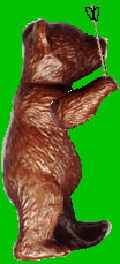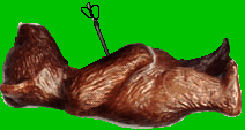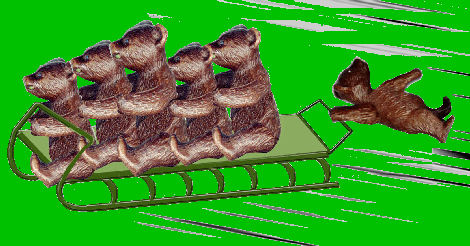Museum Trip 25th September
This year Roy Pickford is arranging a visit to Swindon Railway Museum, with time afterwards to visit the shopping outlet in an old station building. The cost is £15. Please contact Roy or call at the Museum to book your place.
New Secretary
Thanks to Dennis Roles for his work as Secretary. We are sorry he had to stand down but are pleased to welcome Mrs Sandra Tranter as our new Secretary.
Appeal
The Museum needs old cotton sheets and wooden coat hangers for its costume collection. Can you help?
Lecture programme
Just a short reminder that the monthly lecture programme has been discontinued, at least for a year or so, other than for the annual Memorial Lecture. We just aren’t getting enough people coming along to cover the cost of the room and the speaker. We will instead have regular displays and speakers at Coffee Mornings.
100 Club
Please continue to support this!
June 2010
No. 74 Ada Howells £25
No. 59 Ray Jones £10
No.87 Gwyneth Hillier £5
May 2010
No. 18 Rene Morgan £25
No. 77 Vi Owen £10
No. 34 Jill Phipps £5
Fund raising June 2010 - £199
Fund raising July 2010 - £513
The July figure included an impressive £279 for CD sales; more will be available for sale shortly.
Diary Dates
Saturday 25th September – Annual Museum Trip to Swindon Railway Museum Cost £15. Contact Roy Pickford 01495 213377 or call at the Museum.
Thank you!
I would like to say a big thank you on behalf of the Society to everyone who helped in any way to make a success of the recent WW2 Street Party whether it was donating food, cutting sandwiches, or serving food and drinks on the stall. Thank you all once again.
Peggy Bearcroft
Get Well Soon!
Enid Dean has recently had another spell in hospital but is home again now and we send our best wishes for a speedy recovery.
Moments in History
1858 Theodore Roosevelt. Twenty -sixth President of the U. S. A is born.
On 26th October 1858 US President Theodore Roosevelt was born to descendants of Dutch immigrants who had travelled to America during the 17th. century, Following the assassination of President William McKinley, Roosevelt became the youngest ever president at the age of 43.
During his time in office, he led the USA though a period of progressive reforms and built strong relationships with the rest of the world through his foreign polices. From the age of 18 Roosevelt was educated at Harvard University where he excelled academically and athletically. After graduating he then travelled to Germany where he studied for a further year before going in to politics, and early in his career was an ardent reformer.
In 1884 Roosevelt's wife Alice Lee died on the same day as his mother. Roosevelt was devastated and left his political life to spend time in the Badlands of Dakota where he enjoyed cattle driving and hunting. During one notable hunt after becoming president, Roosevelt gave his name to the ''teddy bear'' -a newly emerging soft toy -after refusing to shoot a defenceless bear cub on the hunt. Manufacturers used the president's nickname “Teddy” for the bear despite reports that he disliked the name.
In 1886 he married his second wife Edith and had five children. Roosevelt's re-entry into politics came about when he became a war hero in the battle of San Juan during the Spanish - American War. He eventually became Vice President under William McKinley and when the latter was assassinated in 1901 Roosevelt became President. Throughout his presidency he worked hard to integrate the U.S.A. with the rest of the world and his greatest success was mediating between Russia and Japan during the war of 1905. This earned him the Nobel Peace Prize in 1906. Roosevelt briefly left politics but while canvassing for votes in 1912 he was shot. The bullet was slowed down as it hit the speech paper in his breast pocket but it entered his chest leaving him wounded. He determined to carry on with his speech and on entering hospital, the bullet was deemed to risky to be removed and it stayed in his body for the rest of his life.
Throughout his life Roosevelt wrote more than twenty six books, over a thousand magazine articles and many thousands of speeches and letters. He died in his sleep in 1919 aged sixty.
Compiled by Enid Dean from information published in Peoples Friend 20/12/2008
Older Than Me?
If you grew up in a generation before there was fast food, you may want to share some of these memories with your children or grandchildren.
A young man asked me the other day, “What was your favourite fast food when you were growing up?” “We didn’t have fast food when I was growing up” I informed him. “All food was slow.” He said “Be serious, where did you eat?” “It was at a place called at home”, I explained. “I never ate out. We rarely visited a restaurant until I was married! Mum cooked every day and when Dad got home from work, we sat down together at the dining room table, and if I didn’t like what was put on my plate, I was made to sit there until I ate it.”
By this time the boy was laughing so hard I was afraid he was going to suffer some serious internal damage, so I didn’t tell him how I had to have permission to leave the table, but here are some other things I would havee told him about my childhood if I’d thought his system could have coped with it.
Most people NEVER owned their own house, lads never wore long trousers (even in the winter) until they were about 14, nobody wore Levis, travelled out of the country or had a credit card (credit cards had not been invented). Most people saved up and waited until they could afford to pay for things. My parents didn’t have a car to take me to school. I had to walk or ride a bike.
We didn’t have a television in our house until I was 32. It was, of course, black and white, and the only station went off the air at midnight after playing the national anthem; it came back on the air at about 4pm the following day with a kids programme.
I was 20 years old plus before there was a second channel and I was introduced (in my ‘rich’ cousin’s house) to the delights of commercials! As a child we never had a telephone in the house and had to walk about half a mile to a phone box and put tuppence in the slot if we needed to make a call.
Pizzas were not delivered to our home. In fact we had never heard of them! But milk and bread was, by men with horse drawn vans. All newspapers were delivered by boys before they went to school; most boys delivered papers 6 days per week and got up at 6am each morning.
There were no film ratings because they were responsibly producing films for everyone to enjoy viewing, without bad language, violence or anything really offensive. There were Saturday morning films for the kids, the ‘Thruppenny Rush’!
Growing up ain’t what it used to be, is it?
Written by Brian Pope and submitted by Ann Howells
Poet’s Corner
‘NIGHTFALL AT GILWERN’
Crows have gathered, paired,
then dispersed to nests,
Small birds hide their heads,
Windows start to glow in
terraced dwelling, bungalow
and large detached house.
Dogs settle, heads on paws,
while a ginger tom cat silently,
slowly, begins a night patrol.
As drone of road traffic fades.
A soft wind has dropped,
soon the moon will illuminate,
making shadow a black cloak,
for those who seek places
avoided by faint hearted.
A canal longboat is moored
at the village wharf,
People it carries dine or make
merry at the Corn Exchange Inn.
8 to late shop is now closed,
Fish and chips open for business,
Walkers, cyclists, holiday makers,
head towards bed and breakfast,
But this night is beautiful,
for those who enjoy quiet
peaceful strolls after stress
of another day’s modern life.
Gordon Rowlands, February 2009
Bargain books
The used books we have for sale are regularly recycled and so we thought it was time for a clean sweep and the introduction of fresh stock. If you want any of the books now on the shelves, this is your last chance. Can you please help with bringing along fresh supplies of used books? Please ask others to help.
Cardiff and Captain Scott
Captain Robert Scott’s legendary trip to the South Pole which claimed his life and that of four more explorers left from Cardiff 100 years ago. His ship, the Terra Nova, sailed from the city’s docks laden with Welsh coal, fuel and supplies. City business leaders got behind Scott and even helped him secure government backing for the expedition. The famous masthead is now at the centre of an exhibition about the ill-fated trip at the National Museum in Cardiff.
Scott’s Terra Nova, which he had bought from a Liverpool ship owner, was cheered on by thousands when it set sail from the Welsh capital early on the afternoon of 15 th June 1910. Three years later, crowds of around 60,000 joined Scott’s widow, Lady Helen, and her young son Peter to welcome the ship’s return.
Wales and particularly Cardiff played a huge role in the whole trip and Cardiff contributed far more money than any other city in the UK. The ship went laden with 100 tons of coal, 300 tons of fuel made from coal dust mixed with bitumen, as well as pots and pans from the Llanelli tin works. The ship was so full it started leaking and letting in water.
Among the Cardiff-based sponsors were ship owners Daniel Radcliffe and William Tatem, and James Howell of Howells Department Store provided a Welsh flag which the Terra Nova flew on its long journey south. The editor of the Western Mail, William Davies, was key to rallying public support and he persuaded the Chancellor David Lloyd George to provide a government grant of £20,000 for the expedition.
The exhibition, now at the Waterfront Museum in Swansea, includes a handful of rocks, part of a 35lb load of geological specimens found on a sledge with the bodies of Scott and two of his polar companions.
Source – BBC website
Charles Rolls 1877 – 1910
July 2010 marks the centenary of the death of Charles Rolls of Rolls Royce fame. This pioneering aviator died in an air crash and his memory is celebrated in Monmouth in recognition of his family’s close links with the town. There is a statue of Charles Rolls in Agincourt Square fronting Shire Hall and the last few months have seen various commemorative events concluding in August with ‘Balloon Glow’ on Sunday 1 st August comprising 8 hot air balloons dancing to music and a fireworks finale, and a ‘Charles Rolls Family Tribute’ at the Monmouthshire Show on Thursday 26 th August including an exhibition, pageant and flight of vintage aircraft.
Museum Matters
Toys for Boys
Seeing home made toys in our museum set me thinking about toys that we made when we were children. They were inspired by such films as Ivanhoe, Robin Hood and Captain Horatio Hornblower RN.
There were two types of catapults one was made from a forked branch of a tree cut from the woods above Pant-Y-Pwdyn, using thick rubber and a leather patch. The other was of the David and Goliath Type sling shot.
Swords were made out of lengths of wooden battens, the shields shaped out of hard board with rope handles. They were covered in designs of the owner's preference, some were very elaborate.
Bows and arrows, the bows were made of suitable branches with the bark left on to keep them supple. The arrows were green garden sticks sharpened at one end and weighted with copper wire. After sighting then fired into the air they had a range of 200 yards or more .
 A favourite weapon was the dart. This was made out of a 2ft bamboo cane, the thick end was hollowed out and a 4 inch oval nail inserted. It was held in place by thicker copper wire which also acted as a weight. Two slots were cut in the thinner end into which a 4 finned paper flight was inserted. The missile was launched by means of a piece of string, knotted at one end. The string was wrapped around the shaft trapping the knot near the flight. It was held taut against the shaft and launched with an over arm swing. The string gave an added boost to the missile. Its range was greater than the bows and it could penetrate the barn door which was our castle.
A favourite weapon was the dart. This was made out of a 2ft bamboo cane, the thick end was hollowed out and a 4 inch oval nail inserted. It was held in place by thicker copper wire which also acted as a weight. Two slots were cut in the thinner end into which a 4 finned paper flight was inserted. The missile was launched by means of a piece of string, knotted at one end. The string was wrapped around the shaft trapping the knot near the flight. It was held taut against the shaft and launched with an over arm swing. The string gave an added boost to the missile. Its range was greater than the bows and it could penetrate the barn door which was our castle.
During the summer months we used pieces of cardboard with candle grease rubbed on the underneath to slide down the mountain.
In winter during the snow sledges were made by ourselves and our fathers. One boy was given a tubular steel toboggan on which we could seat six. We took it to the flat above Cwm Farm Rd intending to stop at the fence surrounding the field below. in the event the sledge with us on board crashed through the fence, carried on through the field crashing again through the second fence across the Farm Road on through the third fence into the field beyond. We came to a halt when we crashed into one of the corrugated iron garages at the backs of Earl Street. We all agreed that it was a marvellous sledge but it was some time before we had enough courage for another ride.
The cold winter nights did not deter us, we made, Dickey Show the Light's. These were jam jars with the bottoms punched out; a bean tin with holes punched in was fixed on the top. a candle was stuck to the lid of the jar which was replaced. Carried by a wire handle it resembled a miner's lamp and was a source of light.
To keep warm we used paint tins with holes into which glowing coals were put. a long wire handle was used this enabled the tin to be whirled in an arch the forced draught caused a fiercer blaze.
Bat & Cattie was played at all times of the year. The cattie was made out a piece of firewood rounded and sharpened at two ends, the bat was cut from the handle of a broom handle, (mother's cry of, "What have you done to my sweeping brush!" is something I'll always remember). To play the game the Cattie was placed at an angle against a stone, the end jutting up was struck with the bat causing it to fly up into the air; it was then struck again with the bat causing it to fly forward. The object of the game was to see who could hit it the farthest; the distance was measured by how many lengths of the bat it had gone. This was the most dangerous game as the direction of the cattie was never certain causing broken windows and imageries to spectators.
Other games were Hide & Seek, Kick the tin and Jackie Long Lamp. We made fires to roast potatoes then we sat around telling stories. These activities were curtailed when we rushed home to listen to radio programs, "Jet Morgan Journey into Space", "Dick Barton Special Agent" and "the Goon Show".
 Looking back there were surprisingly few accidents, some of the weapons were confiscated by our parents. Building a raft out of oil drums, planks of wood and rope to sail on the British Pond was stopped immediately they got wind of it.
Looking back there were surprisingly few accidents, some of the weapons were confiscated by our parents. Building a raft out of oil drums, planks of wood and rope to sail on the British Pond was stopped immediately they got wind of it.
Peggy says, "You Pant-Y-Pwdyn boys were a rough lot". But I say "Bears Will Be Bears".

Don Bearcroft Curator
